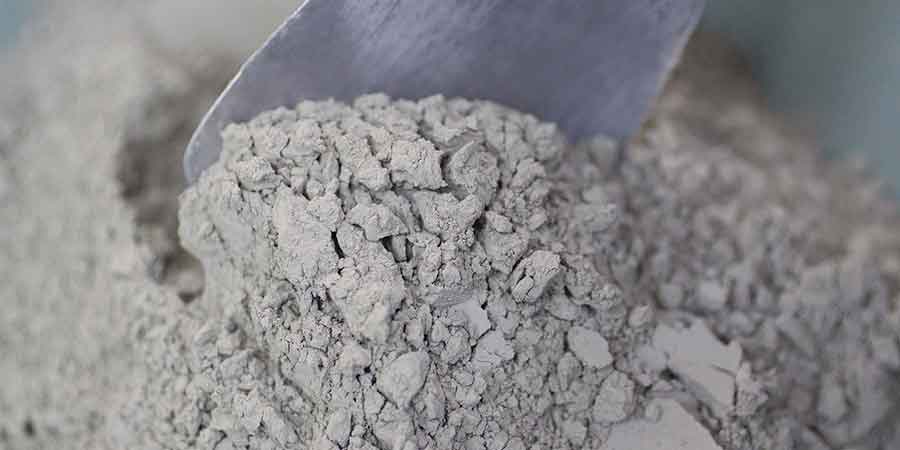This article provides an overview of the differences between ordinary Portland cement (OPC) and Portland pozzolanic cement (PPC), with a focus on application considerations for civil engineers. It is important to highlight that the correct choice of cement has a direct impact on the quality, longevity and performance of a project. This article will discuss and compare the two types of cement side by side, focusing on how each can be used to effectively construct a building.
When it comes to construction, cement is an essential material. It is the main component of concrete and therefore plays an important role in most construction projects. There are different types of cement each with their own advantages and disadvantages. In this article, we will focus on the differences between two types of cement: Regular Portland Cement (OPC) and Portland Pozzolana Cement (PPC).
What is Ordinary Portland Cement (OPC)
OPC is the most commonly used type of cement. It is made by grinding and heating limestone and clay. The resulting mixture is then ground into a fine powder. OPC is suitable for most general construction purposes. It is economical and easy to process.
Ordinary Portland cement is the hydraulic binder obtained by mixing Portland cement clinker, 6% to 15% mixing materials and appropriate amount of gypsum. It is also simply referred to as “ordinary cement”.
There are four strength classes for normal Portland cement: 32.5, 32.5 R, 42.5, 42.5 R and 52.5, 52.5 R. Normal cement should begin to harden after 45 minutes, at minimum, and fully after 10 hours maximum.
The sieve residue on the sieve with a square hole of 0.08 mm should not be more than 10%. Furthermore, boiling stability must be defined. The cement must have an ignition loss of no more than 5.0%.
What is Portland pozzolana cement?
PPC, on the other hand, is made by adding pozzolanic substances (such as fly ash or rice husk ash) to OPC. This combination creates a more durable cement that is resistant to chemical attack. PPC is often used in the construction of buildings in areas with high humidity because it is less prone to cracking when exposed to moisture.
PPC is a type of mixed cement. It consists of clinker, 4% gypsum and 15-35% pozzolanic material such as fly ash, fired clay, volcanic ash, fly ash or silicate vapors.
PPC increases the density and waterproofing of concrete by reacting with calcium hydroxide that is released when Portland cement hydrates and forms cementitious compounds. It can be safely used in the construction of hydraulic structures, marine projects, large concrete works, etc. Protects against alkali-aggregate reaction in concrete.
So which type of cement is best for your construction project? The answer depends on the specific application. In general, OPC is a good choice for most construction projects. However, if you are working in an area with high humidity or need a cement that is more resistant to chemical attack, PPC may be a better option.


Comparison between OPC and PPC cement
| Ordinary Portland Cement (OPC) | Portland Pozzolana Cement (PPC) |
| In the initial phase, OPC has greater resistance than PPC | It takes some time to develop strength. The strength developed over time is greater than the OPC |
| The heat of hydration and temperature rise of concrete are higher than PPC | As the hydration process is smaller, the heat of hydration is also smaller. The use of additives such as fly ash, silica fume, etc. is the main reason for this. |
| Due to the high heat of hydration, OPC would not be used for solid concrete construction. | PPC is more suitable for solid concrete construction than OPC. |
| The initial OPC setup time is 30 minutes and the final setup time is 280 minutes. However, as already mentioned, these values may vary. | The initial setup time of PPC is 30, which is the same as that of OPC, and the final setup time is 600 minutes. |
| Resistance to alkalis, sulfates, chlorides, etc. is comparatively smaller. | Resistance to attacks by alkalis, sulfates, chlorides, etc. is comparatively larger. |
| Carbon dioxide emissions are higher. | As we use by-products such as fly ash, carbon dioxide emissions are lower. |
| The durability of concrete is less compared to PPC. | The durability of concrete made from PPC is increased by adding pozzolanic substances. |
| The production cost would be higher compared to PPC. | The costs would be lower. |

